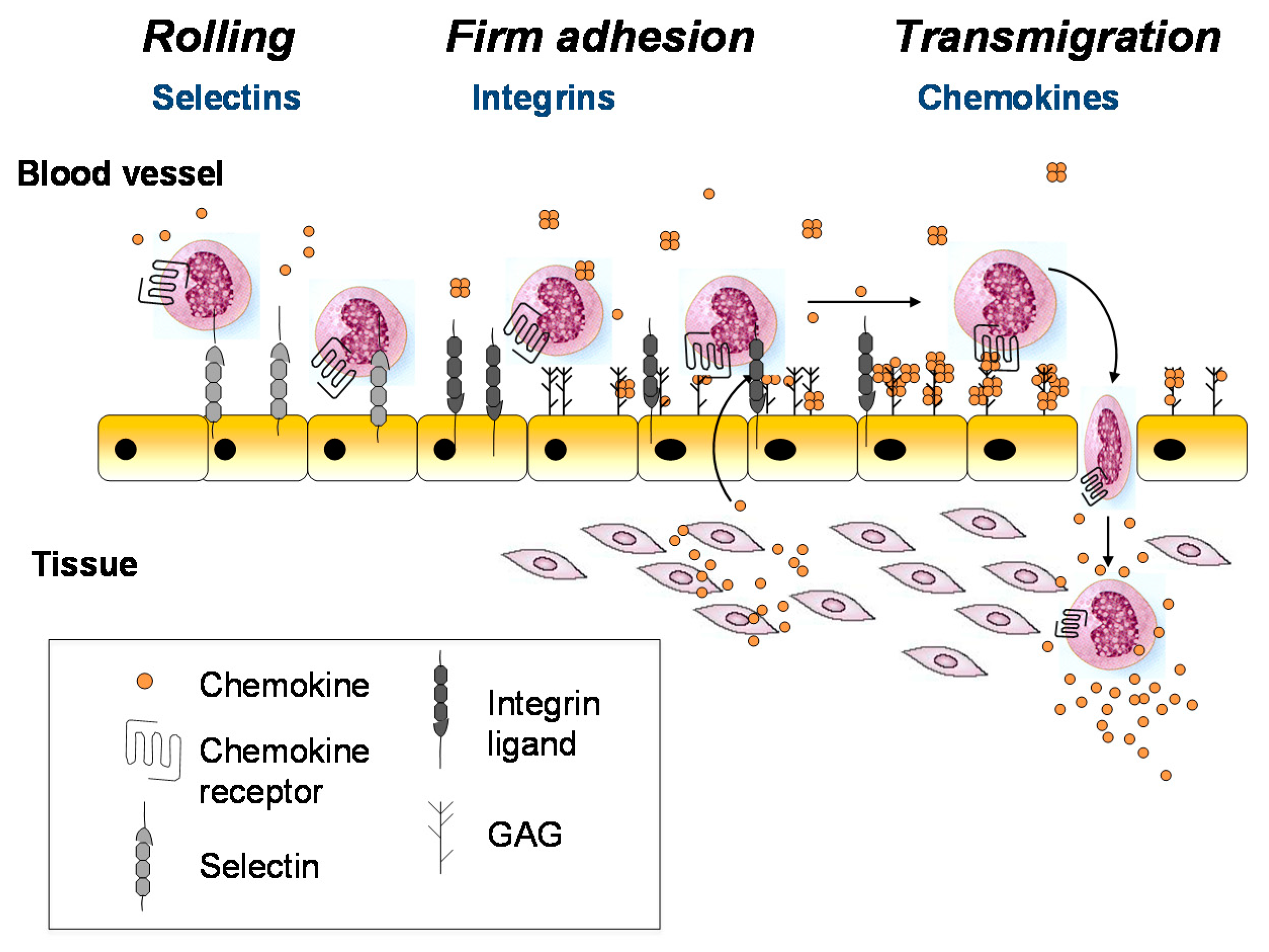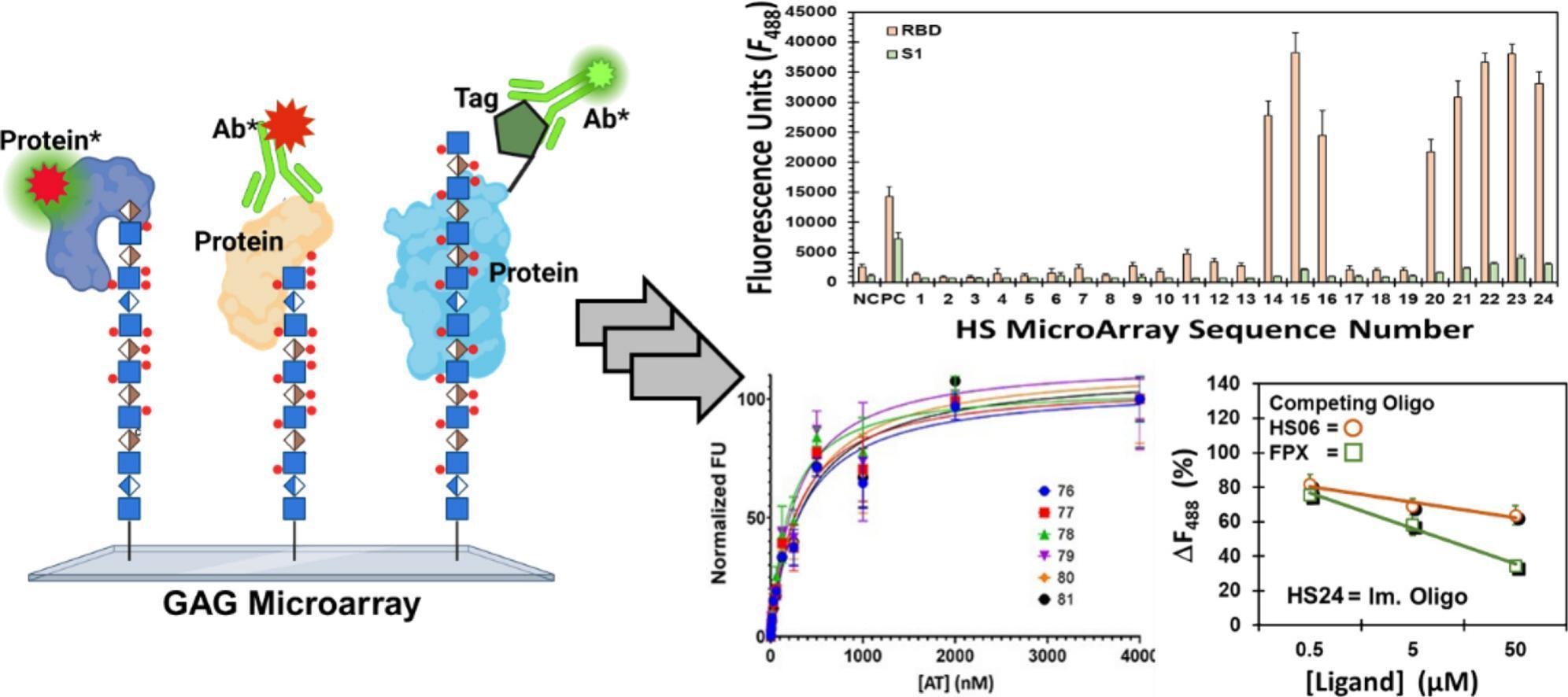Glycosaminoglycan Microarray Service
- Protein-GAG Interaction Studies
- Pathogen Recognition Mechanism Studies
- Disease-Associated Glycomics Analysis
- New Drug and Biologic Development
- Vaccine and Immunotherapy Research
Glycosaminoglycan Microarray Service is a high-throughput glycan interaction analysis service that immobilizes glycosaminoglycans (GAGs) from various sources and with different modification patterns onto microarray substrates with high precision, and incubates them in parallel with target biomolecules such as proteins, antibodies, viruses, or cells to rapidly obtain their binding profiles and affinity characteristics. This service enables simultaneous detection of interactions between hundreds of GAGs and multiple analytes in a single experiment, providing systematic data support for studying GAG-mediated molecular recognition, signal regulation, and disease-related mechanisms.
GAGs are linear polysaccharides composed of repeating disaccharide units, often covalently bound to proteins to form proteoglycans, and are widely distributed on cell surfaces and within the extracellular matrix. Playing important roles in cell signaling, immune regulation, cell adhesion, angiogenesis, pathogen invasion, and tumor metastasis, GAGs have structural diversity such as sulfation patterns, chain length, and conformation that is closely related to their biological functions, and systematically elucidating the interactions between GAGs of different structures and proteins, cells, or pathogens is of great significance for glycoscience research, disease mechanism exploration, drug target discovery, and biopharmaceutical development.

Proudfoot AEI. et al. Pharmaceuticals. 2017.
Figure 1. The Role of GAGs in Cell Recruitment.
Glycosaminoglycan Microarray is a solid-phase chip-based high-throughput detection platform that enables rapid, parallel detection and quantitative analysis of interactions between GAGs and proteins, cells, pathogens, or other ligands, allowing comparison of the binding characteristics of hundreds of structurally distinct GAGs in a single experiment.
Leveraging a highly sensitive signal detection system, MtoZ Biolabs provides Glycosaminoglycan Microarray Service to perform high-throughput binding analysis between various glycosaminoglycans and target molecules. MtoZ Biolabs can customize array content and experimental conditions based on specific research needs and combine them with expert data analysis to deliver accurate and reliable technical support for disease mechanism studies, biomarker discovery, and drug development.
Analysis Workflow
The main workflow of the Glycosaminoglycan Microarray Service is as follows:
1. Array Preparation
Based on project requirements, different types and structures of GAGs are precisely immobilized on the surface of a solid support such as glass slides or microarray chips, ensuring proper spatial orientation and biological activity.
2. Sample Incubation
Under optimized reaction conditions, the test biomolecules are incubated with the GAG array to maximally preserve their native binding characteristics, enabling accurate and reliable interaction detection.
3. Signal Detection
Fluorescent labeling, chemiluminescence, or other highly sensitive detection methods are used to capture binding signals for both qualitative and quantitative analysis.
4. Data Analysis
Binding patterns, affinities, and specificities are statistically analyzed and visualized to generate binding profiles and functional correlation analysis reports.

Chittum JE. et al. Carbohydr Polym. 2024.
Figure 2. Glycosaminoglycan Microarrays for Studying Glycosaminoglycan-Protein Systems.
Service Advantages
High-Throughput Detection Capability: A single experiment can simultaneously analyze multiple types of GAGs, significantly enhancing research efficiency and meeting the needs of large-scale screening and comparative studies.
Ultra-High Sensitivity and Specificity: The platform can accurately capture interactions between low abundance GAGs and target molecules, while effectively distinguishing different sulfation patterns and structural isomers.
Broad Structural Coverage: The microarray library includes a wide range of natural and synthetic GAG structures, including sulfated, desulfated, and varying chain length variants, enabling multidimensional characterization.
Customized Experimental Design: Flexible adjustment of array content, detection conditions, and data analysis approaches according to research objectives supports applications ranging from basic research to applied development.
Data Reliability and Reproducibility: A rigorous quality control system ensures the accuracy and reproducibility of experimental data, providing a solid foundation for downstream functional analysis and mechanistic studies.
Sample Submission Suggestions
Sample Types: Supports various sample types, including but not limited to purified proteins, antibodies, cell lysates, and tissue extracts.
Storage and Transportation: Samples should be stored at low temperatures (≤ -20°C) and transported on dry ice. Avoid repeated freeze–thaw cycles.
Additional Notes: It is recommended to consult with the MtoZ Biolabs technical team before sample submission to discuss experimental objectives and sample characteristics, and to obtain detailed, tailored guidelines for sample preparation and submission.
Applications
Systematically analyze the binding specificity and affinity between proteins, antibodies, viral envelope proteins, and specific GAG structures to elucidate their biological functional mechanisms.
Evaluate the binding patterns of pathogens such as viruses, bacteria, or parasites with host GAGs to support infection mechanism research and anti-infection strategy development.
Identify GAG expression changes in pathological states such as cancer, inflammation, and neurodegenerative diseases for biomarker discovery and disease diagnosis research.
Screen drug molecules or biologics targeting specific GAG structures to facilitate the design of targeted therapeutics and lead compound identification.
Assess the role of GAGs in immune regulation and antigen recognition to provide data support for glycan-based vaccine design and immunotherapy strategies.
Related Services
How to order?







